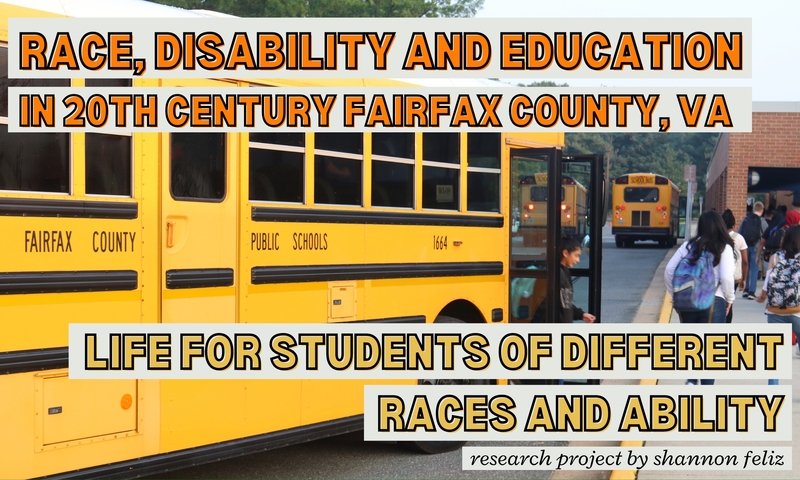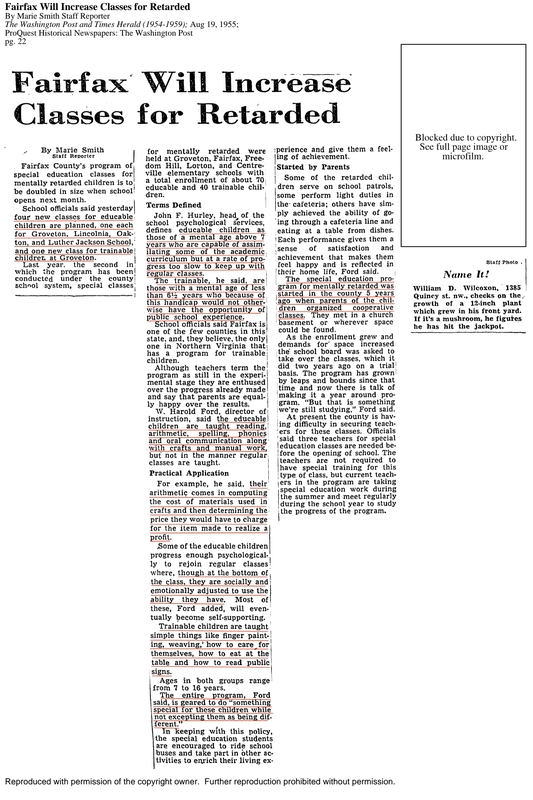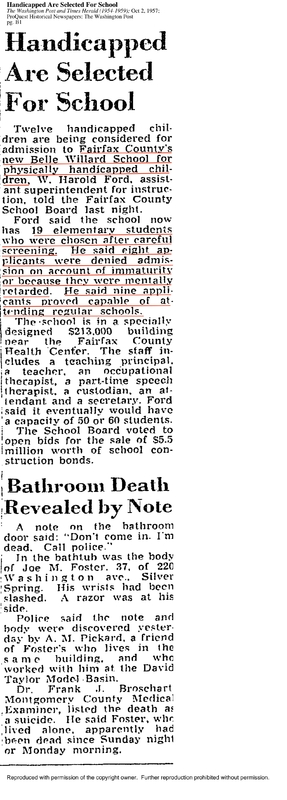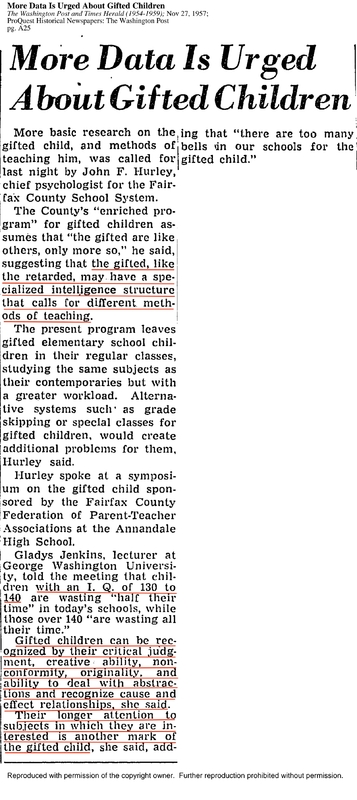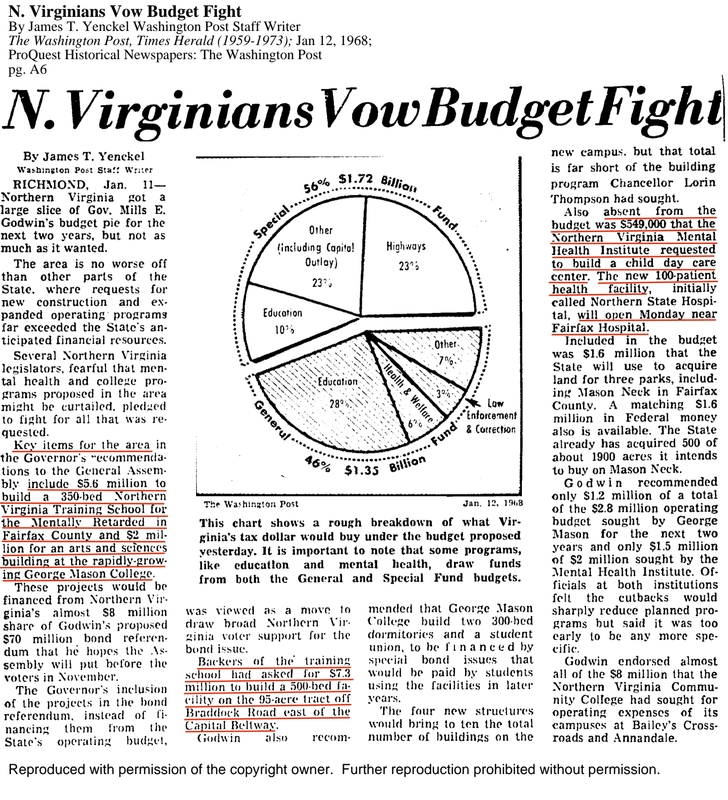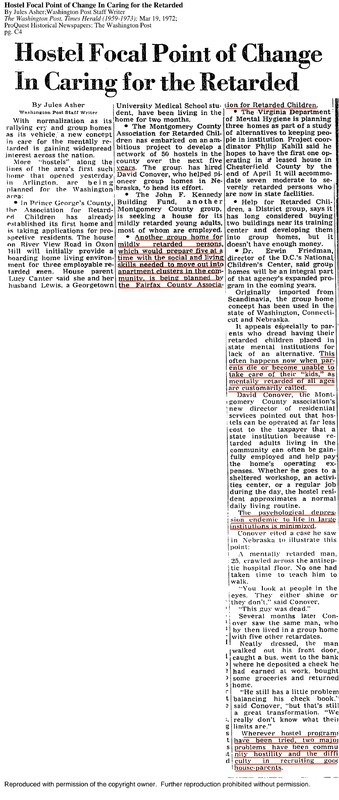As Virginia began to integrate, a good amount of schools for children with disabilities opened in what used to be all-Black schools, like the Drew-Smith School in Gum Springs and the Oak Grove School in Herndon; additionally, special education programs were implemented at all-Black schools that were doing rather well academically, like Luther Jackson High School, while gifted programs began popping up for students at white schools. The children who attended these schools and programs were often referred to as either “trainable” or “educable”. The chief difference between trainable and educable children was whether or not they were deemed “able” to be exploited intellectually (educable) rather than physically (trainable). Like the Black students before them, some of the students who attended these programs often had to travel from all over just to attend the program. For some students with disabilities, traveling long distances each day to get to school can prove to be a highly uncomfortable and sometimes painful experience, yet Virginia continued to be a big proponent of regional schooling for undesirable children.
As more schools began to integrate and close down, more “special education” and “gifted” programs began cropping up with them as well. One article from 1957 even compares the “gifted” to the “retarded”, but still categorizes them differently, stating that they both have different learning needs than mainstream students, even going as far to say that gifted students “can be identified” by their “nonconformity” and “originality”– something minoritized children are normally ostracized for. Additionally, people with different types of disabilities were segregated to seperate schools; i.e., there were different facilities/schools for blind, deaf, physically disabled, and mentally disabled/emotionally disturbed students. If they were not placed in different facilities altogether, they were segregated within facilities by unit or section, leaving little ability for intermingling. After these schools and hospitals were built and/or re-opened, they faced the same kinds of poor funding issues that Black schools had previously faced. Many were eventually closed down for a variety of reasons, ranging from physical and sexual abuse allegations to poor funding and deplorable conditions, giving way to small group homes and more special education programs, which were equally inadequate. All of these exist in some form still today, including facilities and group homes, and all of them have roots in eugenics, racism, and abuse. Additionally, it could be that there is more to be researched on how this might connect to the school-to-prison pipeline and the rise in criminalization and incarceration of students (which disproportionately affects Black and brown children).
